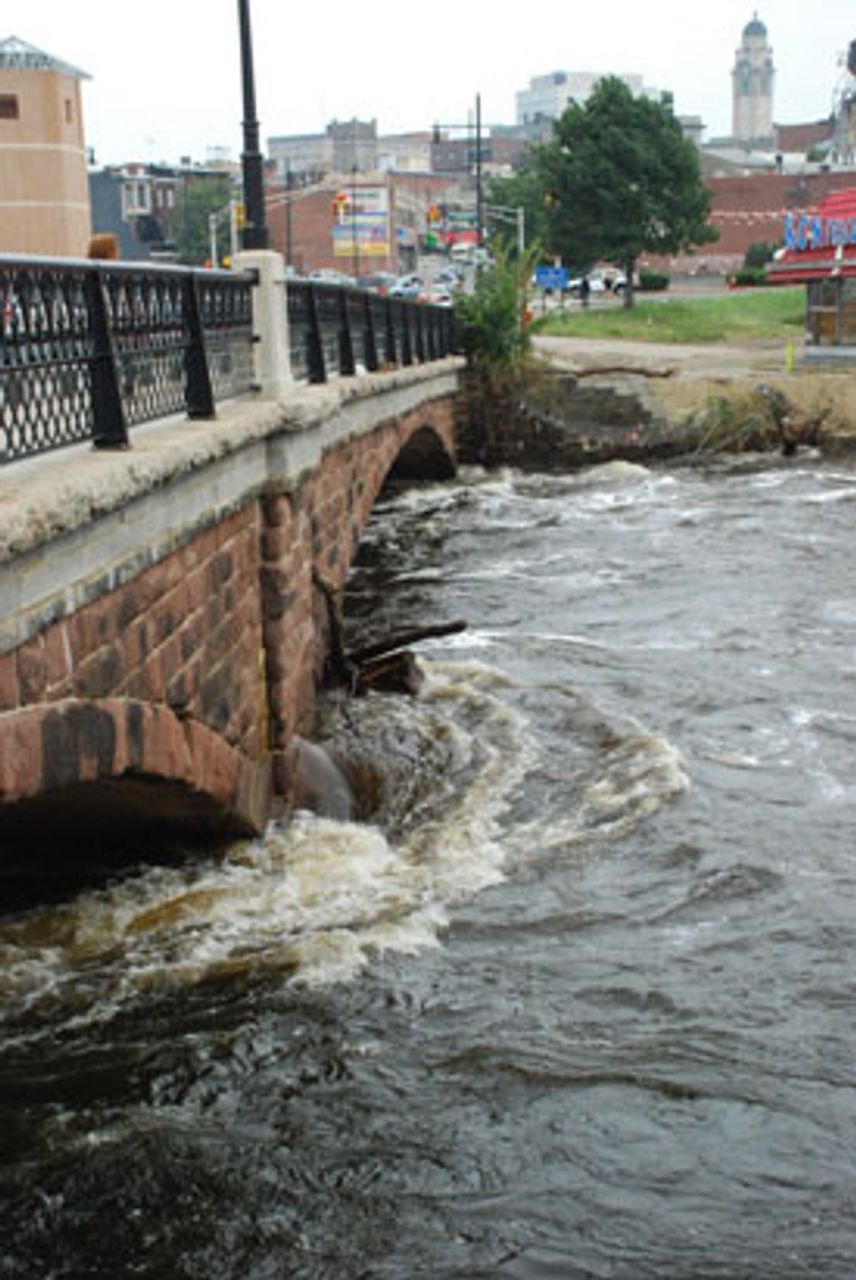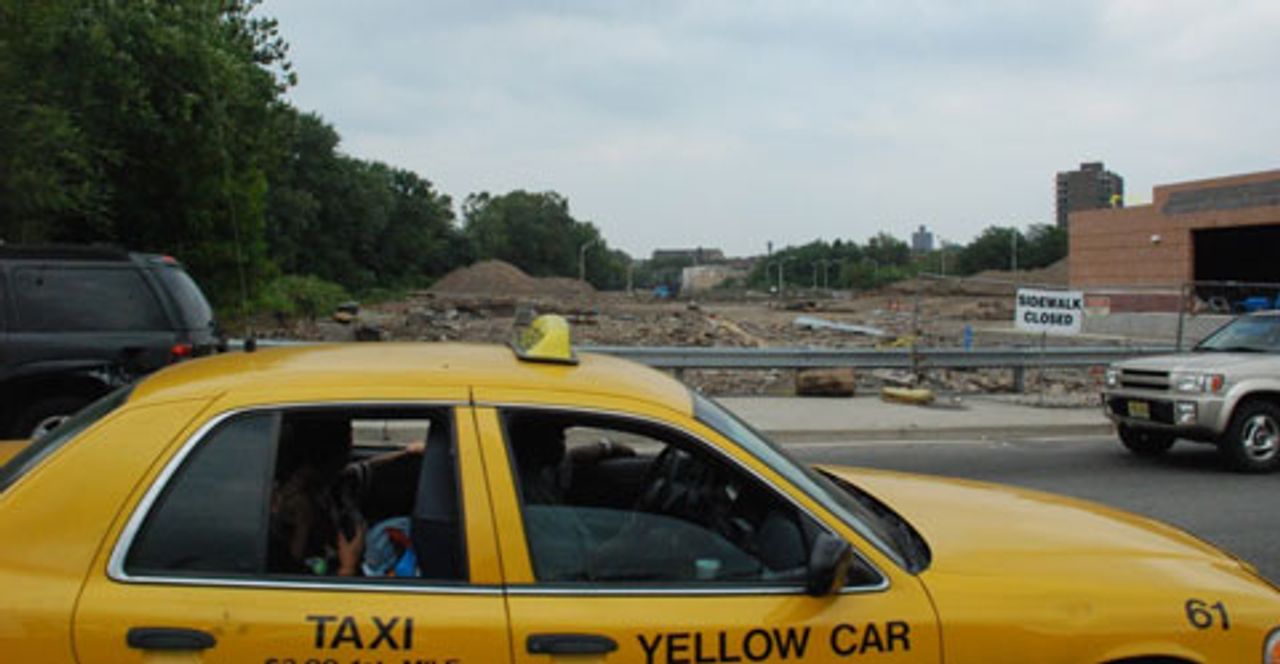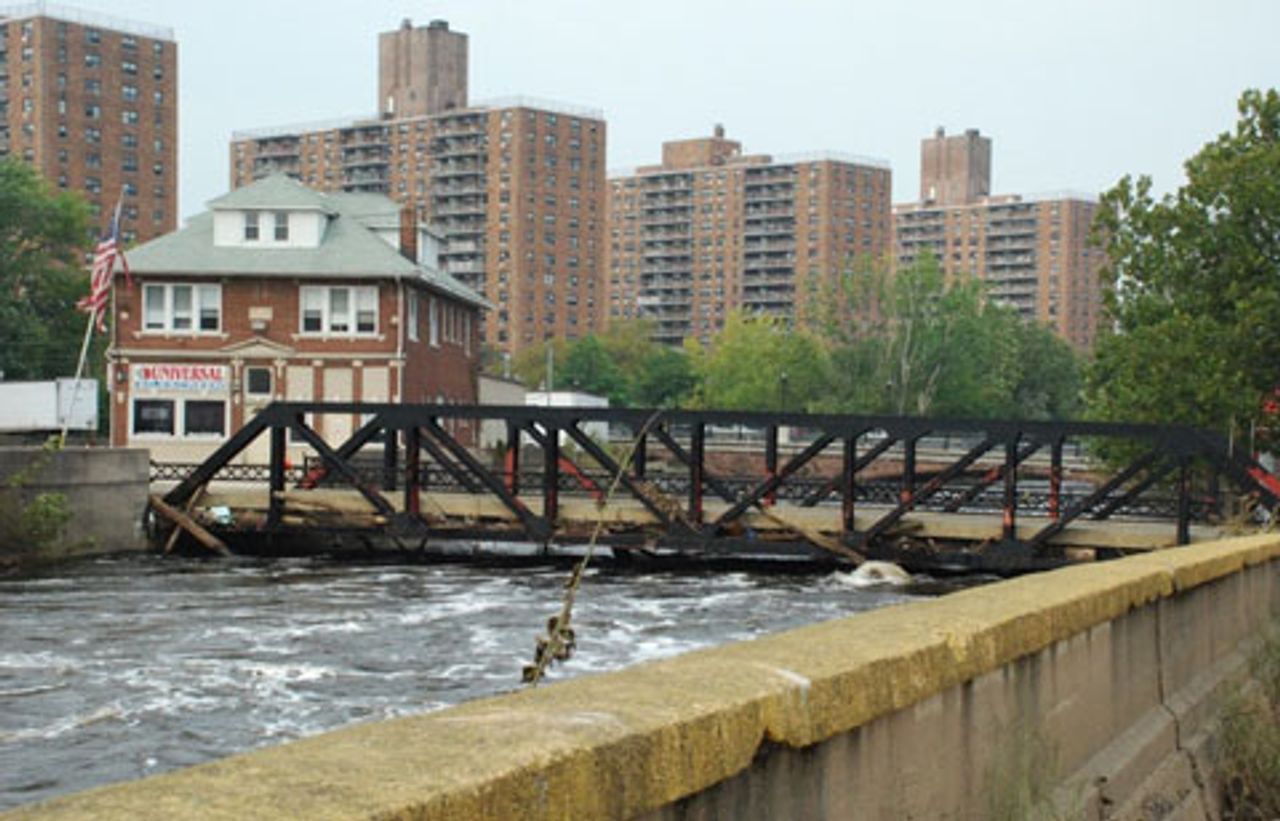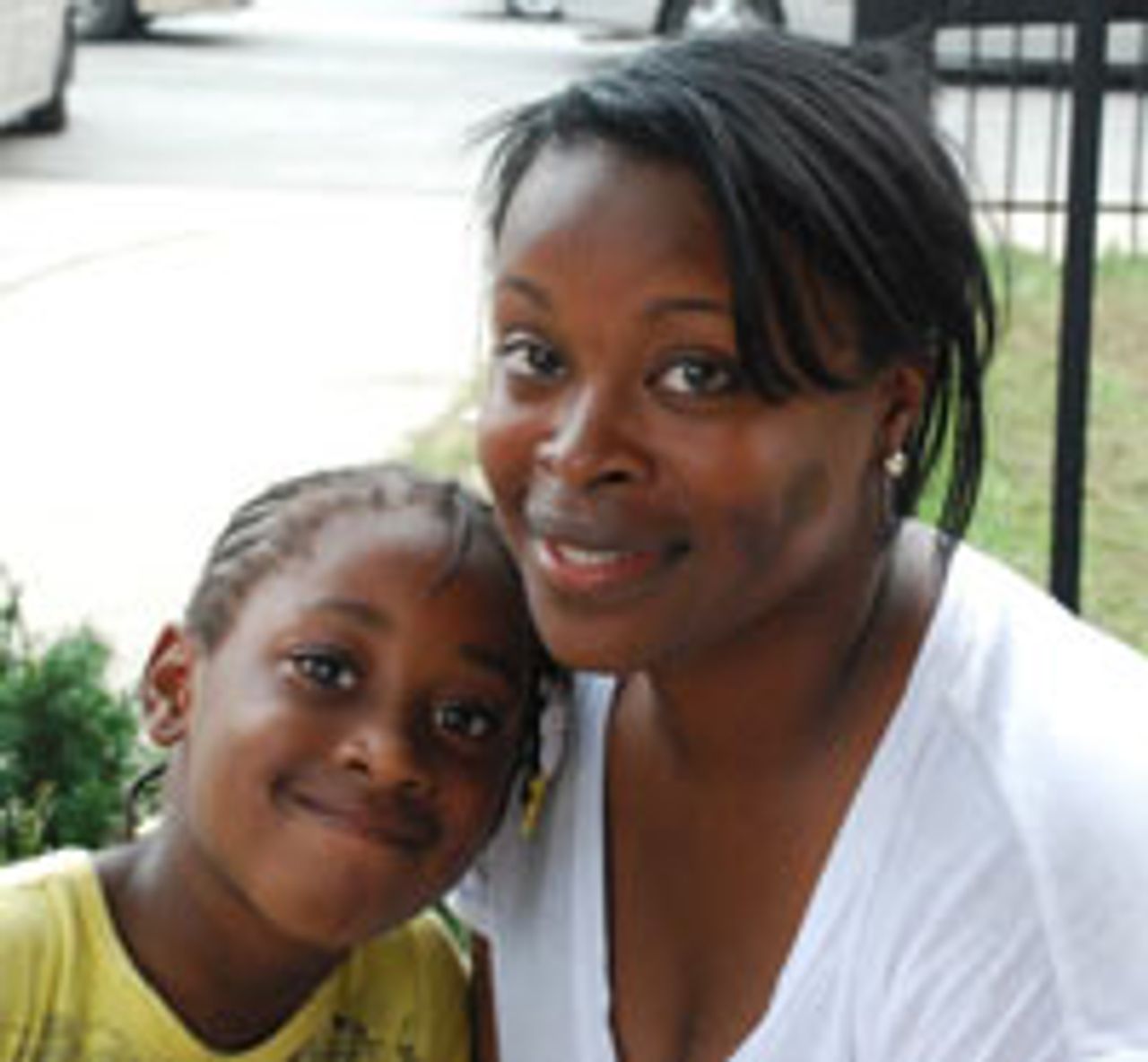President Barack Obama made a three-hour visit to the flood-stricken state of New Jersey on Sunday. He toured the city of Paterson, the third largest in the state and the worst hit by the floods caused by Hurricane Irene a week ago.
 West Broadway bridge with high water and debris
West Broadway bridge with high water and debrisObama was met at the airport by Republican Governor Chris Christie, Democratic Senators Frank Lautenberg and Robert Menendez, and other state officials. The group traveled by motorcade to Paterson after an aerial tour of other flooded areas and a short stop in Wayne, another town badly affected by the flooding.
Major federal disasters have already been declared in New Jersey, New York and other states. The Federal Emergency Management Agency has announced that residents of all of New Jersey’s 21 counties are eligible to apply for individual federal assistance.
Obama made headlines with a promise to New Jersey residents and others affected by the hurricane that political disputes in Washington would not interfere with aid to communities. Despite the presidential photo-op, however, the paucity of federal aid and the difficulties facing the largely poor residents of Paterson and other areas in the face of bureaucratic red tape are obvious.
The presidential trip to New Jersey was designed to avoid the public relations disaster that befell the Bush administration after Hurricane Katrina, but the basic policies remain the same. At a time of austerity, continued budget cuts and the refusal to consider any federal jobs program, the victims of the social crisis exposed and deepened by the recent hurricane will find no relief from the parties of big business.
 Area heavily scoured by flood waters along right bank of Passaic River
Area heavily scoured by flood waters along right bank of Passaic RiverPaterson, with about 150,000 people, is facing enormous problems more than a week after the hurricane. The city is surrounded by the Passaic River on three sides. Nearly 4,000 people were forced to flee when the river peaked several days after the storm. While the water has receded in most areas, a massive cleanup operation is required.
“We lost all our bridges, eventually making the City of Paterson an island,” the Passaic County Office of Emergency Management coordinator told the Newark Star-Ledger. As of September 2, three of the city’s seven bridges were still closed, according to a report in the newspaper. Paterson’s municipal building is still closed.
New Jersey as a whole continues to face the aftereffects of the flooding. Thousands of customers still remain without electricity, according to Jersey Central Power and Light. Public Service Electric and Gas, serving Essex, Passaic, Bergen and Hudson counties, said most of its service has been restored.
Last week’s hurricane and flooding has highlighted the continuing social disaster facing millions of working class families in the Northeast region of the US. While the national unemployment rate is 9.1 percent, it is 9.7 percent in New Jersey and officially 16.4 percent in Paterson. Since these official rates do not include part-time and “discouraged” workers, the true jobless level for Paterson is undoubtedly well over 25 percent, and official statistics show that roughly one-quarter of the population is under the poverty level.
Nor is Paterson an exception as far as poverty and joblessness. The state’s two largest cities, Newark and Jersey City, are almost equally affected by epidemic unemployment and all of the social ills associated with poverty. Camden, in the southern part of the state across the Delaware River from Philadelphia, is one of the poorest cities in the country.
News accounts of Obama’s visit took note of the relatively friendly interchange between the Democratic president and the Republican Governor Christie. The governor, who has become known for his bellicose right-wing rhetoric and demagogic criticisms of Obama, praised the administration’s response to Hurricane Irene.
 Area heavily scoured by flood waters along right bank of Passaic River
Area heavily scoured by flood waters along right bank of Passaic RiverNo doubt the hints of renewed bipartisanship have something to do with fear that public anger with the deepening economic and social crisis will find expression in the aftermath of the flooding disaster. The WSWS spoke to workers affected by the flooding in Paterson about the immediate problems they face as well as the social and economic crisis afflicting Paterson before the added blow of Hurricane Irene.
Regina, who lives in Riverview Towers, a high-rise development along the Passaic River, described the conditions. “The flooding was very bad,” she said. “We had water halfway up the front steps. We had no electricity for five days. There are still no lights in the elevators and old people have to find their way in the dark.
“We had to evacuate our homes and all of our food was spoiled. They won’t give us money to replace the spoiled food. I’ve lived here for 30 years and this is the worst flooding I’ve ever seen. The disaster here has not received enough attention.”
 Shataris Smith
Shataris SmithShataris Smith, another resident of Riverview Towers, said, “I believe [the response to the flood] could have been done better. They could have been prepared.
“I don’t see why Obama came now. He should have seen it when it was a disaster. They cleaned up everything for him to come now.” She was skeptical about how much aid people would eventually receive. “I don’t want to be negative,” she said. “We’ll see.”
Shataris is currently receiving unemployment benefits and is studying to be a nurse. She had to file repeated appeals to obtain benefits, and was told that she would have to wait a year before she could file a claim on her last job, where she earned $16 an hour, but could in the meantime only receive benefits based on a job that ended in 2007, where she earned $7.50.
Richard Scott said, “It’s very hard to make a living in this city. I think we’re moving towards a depression that’s going to be worse than 1929. The super-rich have so much money, but they want more and more. They want cheap labor, so they invest overseas instead of here.
“The only reason I’m surviving right now is because of Social Security and disability benefits. They want to make us all poor and desperate so we’ll take any job. You’ve got five or ten people unemployed for every job available. This can only lead to disaster.
“Many small businesses around here are failing,” Richard said. “People need to have money to buy things. It might turn into a ghost town. Mortgages are much higher and rent is out of control. I think we are going to see massive unrest in this country, and the National Guard won’t be able to stop it.”
 Charles Maldonado
Charles MaldonadoCharles Maldonado said he saw no difference between any of the local, state and federal Democratic and Republican politicians. “Honestly, I haven’t seen any difference,” he said. “I’ve been here for three years and for three years it’s been the same.”
Asked whether government represents working people, he replied, “Not at all, not right now. You could ask a hundred people this same question and ninety of them are going to say no.”
“Unemployment is over the roof right now,” he added. “People are desperate to have an answer. It’s like we’re in limbo right now. We’re not even sure if the United States is going to be here tomorrow. I don’t know if they’re going to go bankrupt. Who would take over if that happens? I think there are a lot of people who think the same right now. They’re not sure.”
